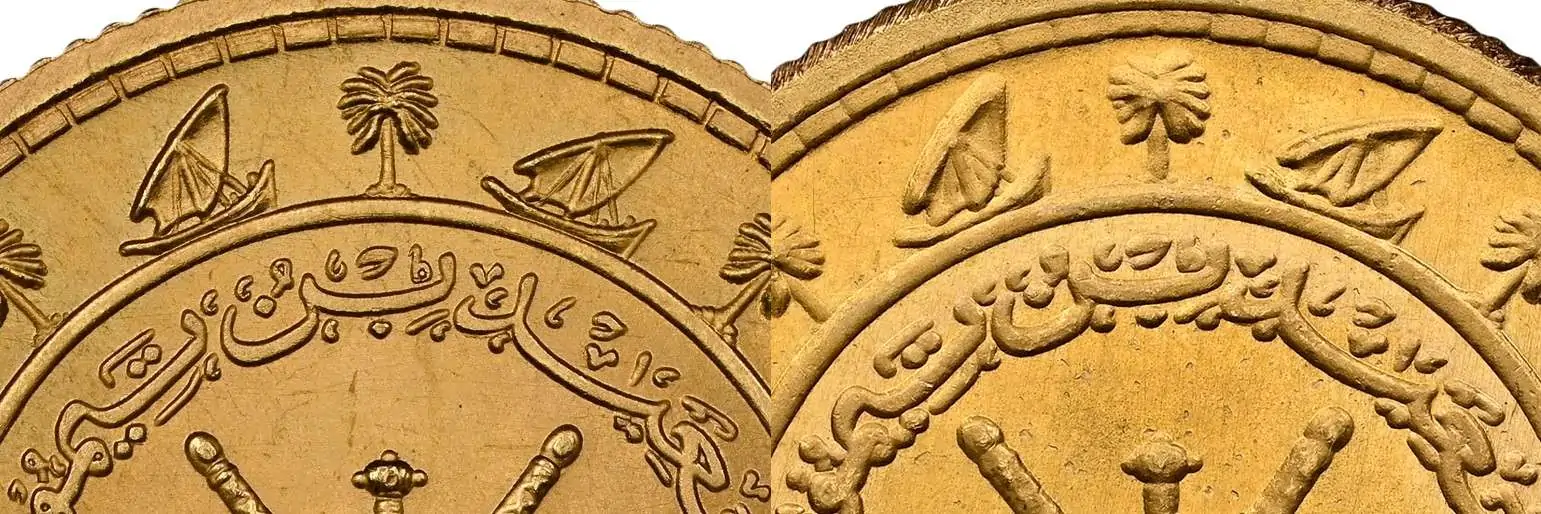NGC -
The lack of details in the trees and elsewhere shows that this coin is a fake.The Omani Empire, based in the eastern Arabian Peninsula, grew into a regional power in the Indian Ocean in the 18th and 19th centuries. After the death of its ruling sultan in 1856, it was split between two of his sons, with one taking the African territories centered on Zanzibar and the other taking the Sultanate of Muscat and Oman over 2,000 miles to the north.
The sultanate's final ruler was Said bin Taimur, whose reign began in 1932. Surviving unsuccessful revolts in the 1950s and 1960s, the sultan became increasingly isolated and erratic before being deposed by his son in a palace coup in 1970. (His son went on to rule for a half-century over what was renamed the Sultanate of Oman.)
After World War II, Said bin Taimur introduced a new coinage. The highest denomination, 15 Saidi Rials, was a non-circulating gold coin issued only in AH1381 (1961). The coin weighs just under 8 grams (about a quarter ounce). Today, genuine examples sell for roughly twice their melt value, reflecting the numismatic premium these historic coins have among collectors.
 Genuine Muscat and Oman AH1381 (1961) Gold 15 Saidi Rials
Genuine Muscat and Oman AH1381 (1961) Gold 15 Saidi RialsNGC recently received a purported 15 Saidi Rials that was quickly determined to be a counterfeit.
 Counterfeit Muscat and Oman AH1381 (1961) Gold 15 Saidi Rials
Counterfeit Muscat and Oman AH1381 (1961) Gold 15 Saidi RialsThe counterfeit has poor details, especially noticeable on the national symbol at the center of the obverse and in the trees. In addition, the rectangles near the rims of the counterfeit blend into the border and into each other in certain places.
 Close-ups of a genuine Gold 15 Saidi Rials (left) and the counterfeiti
Close-ups of a genuine Gold 15 Saidi Rials (left) and the counterfeitiNGC has certified coins from virtually every past and present country, including hundreds from the Sultanate of Muscat and Oman.
Read More: Counterfeit Detection Series Check out Muscat, Oman gold coins on ebay
Check out Muscat, Oman gold coins on ebay.
























